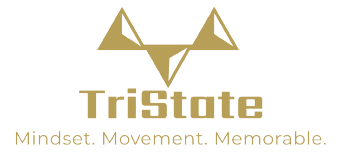Using Data & Technology in Training: What’s Worth It?
Not all tools are created equal—here’s what we use at TriState, why it works, and how to make the right call for your athletes.
In today’s training world, you can measure just about anything—bar speed, jump height, load tolerance, readiness scores, movement symmetry, and more.
But just because you can track everything… doesn’t mean you should.
At TriState, we believe in using technology and data to inform our coaching—not replace it. Here’s what we’ve learned about what’s worth it, what isn’t, and how to use it all without getting overwhelmed.
What We Actually Use at TriState
We lean on four primary tools to support our athletes—each with a distinct purpose:
TrainHeroic
Our central programming platform. We use it not just to deliver training, but to track progress, tonnage, and performance trends across training cycles.
CoachNow
Our video review system. Athletes submit lifts for feedback, and we annotate, draw, and voice over key technical points. It keeps remote coaching personalized and efficient.
Hawkin Dynamics Force Plates
Our go-to for real-time neuromuscular feedback. We use these to:
Monitor fatigue
Track recovery trends
Flag left–right imbalances
Assess readiness before high-intensity sessions
Velocity-Based Training (VBT)
Primarily used for squats, our VBT system helps:
Adjust sessions on the fly
Gauge how recovered an athlete truly is
Avoid overtraining on days where the bar just isn’t moving well
For athletes juggling work, life, and stress, VBT is a fantastic tool to keep training responsive and safe.
How We Actually Use the Data
The tools are helpful—but the decisions they help us make are what matter.
If an athlete’s RSI is trending up on the force plates → we might push volume or intensity that day.
If their bar speed is slowing down week to week → we might pull volume back or shorten the training week.
If a lift looks great on video but their ground reaction data shows an imbalance → we’ll adjust the warm-up, movement prep, or accessory lifts.
Force plates and velocity are especially powerful when an athlete feels fine, but something deeper isn’t adding up. And when things are trending well? The data gives us the confidence to say: let them go.
What We’ve Tried That Didn’t Stick
We’ve tested other training platforms—but they either didn’t align with the way weightlifters train or were too complex for what we needed.
TrainHeroic remains our go-to—not because it’s flashy, but because it’s adaptable and consistent.
Sometimes the best tool is the one your staff and athletes actually use, not the one with the most features.
Data vs. Coaching Eye: Which Comes First?
Always the coaching eye.
But that doesn’t mean we ignore data.
If an athlete is moving well—smooth bar path, strong position, focused execution—we’ll often let them go, even if a metric is a little off.
But if the force plates say their power output is crashing? We take that seriously.
Data is the backup camera.
Your coaching eye is still driving the car.
What to Start With (If You’re New to Tech)
If you’re just starting to layer in data—whether you’re a solo athlete or a growing coach—start here:
✅
For Athletes
Use a program platform like TrainHeroic or TrueCoach. The built-in tracking beats pen-and-paper, and it keeps you accountable.
Invest in a basic velocity system (for squats). You’ll learn to auto-regulate better and keep your training safer and more consistent—especially if you work or train alone.
✅
For Coaches
Start with video review tools. CoachNow, Dropbox, or even private Instagram DMs can work—what matters is regular technical feedback.
Don’t rush into high-end tech. Master feedback, relationship-building, and pattern recognition first. Then build from there.
Final Thoughts
Technology isn’t a substitute for coaching—it’s a tool to enhance it.
The real magic is still in:
The conversations
The cues
The timing
The trust
Use what serves you. Ditch what doesn’t. And always remember: your athlete’s performance doesn’t start with a graph—it starts with a conversation.
